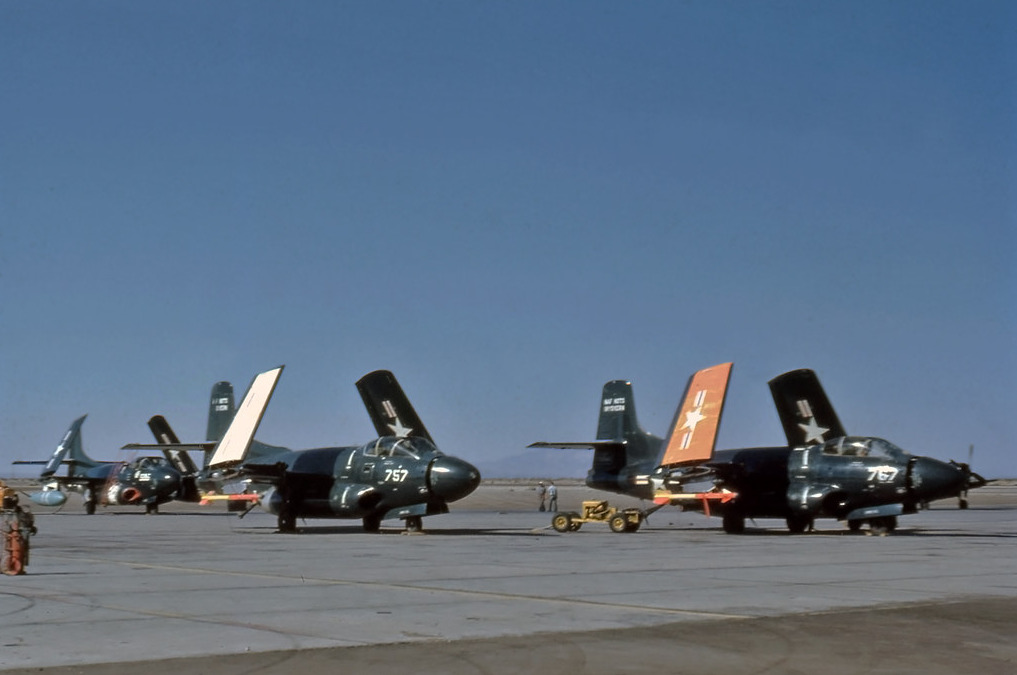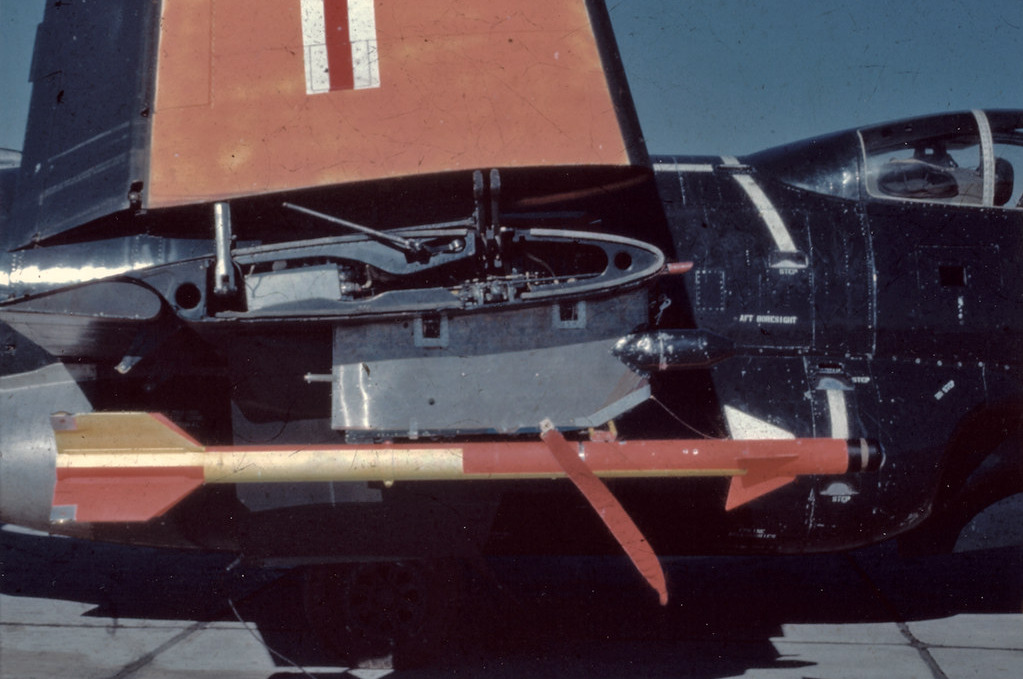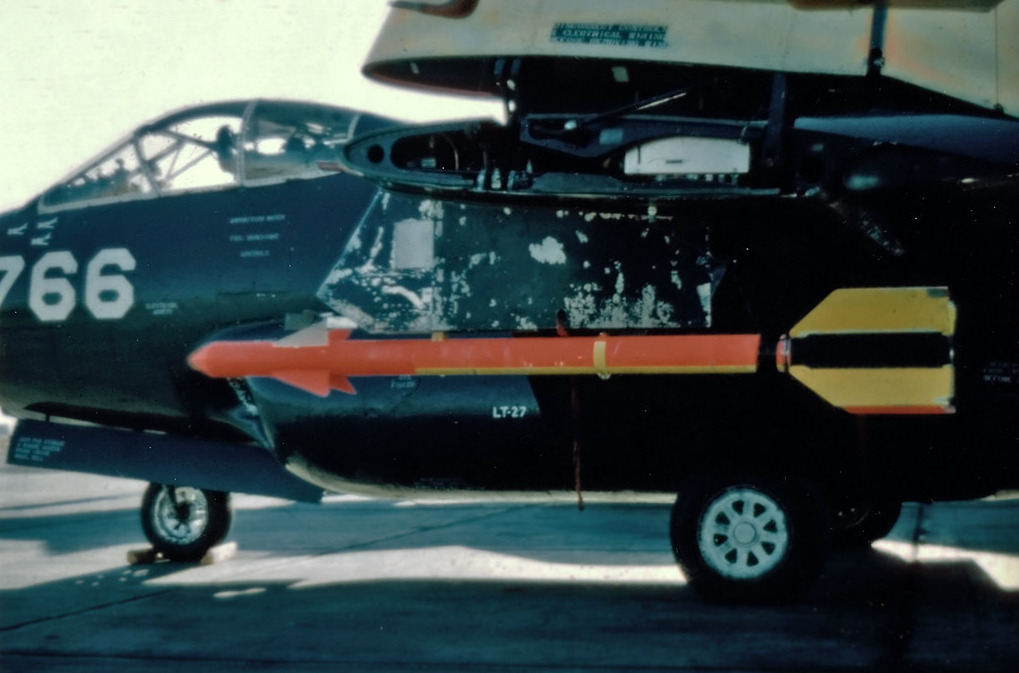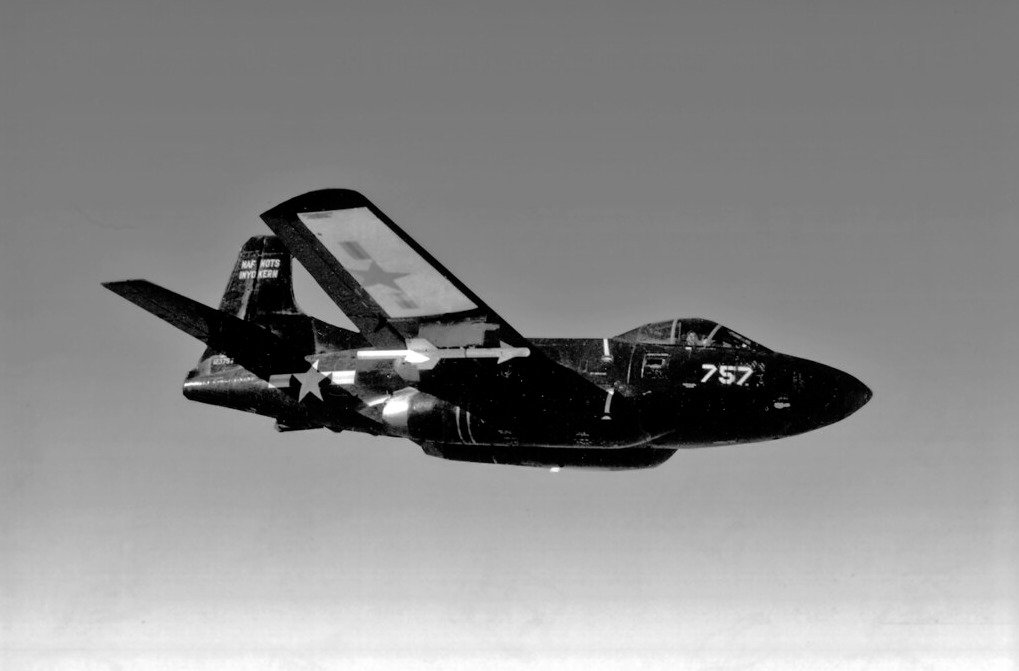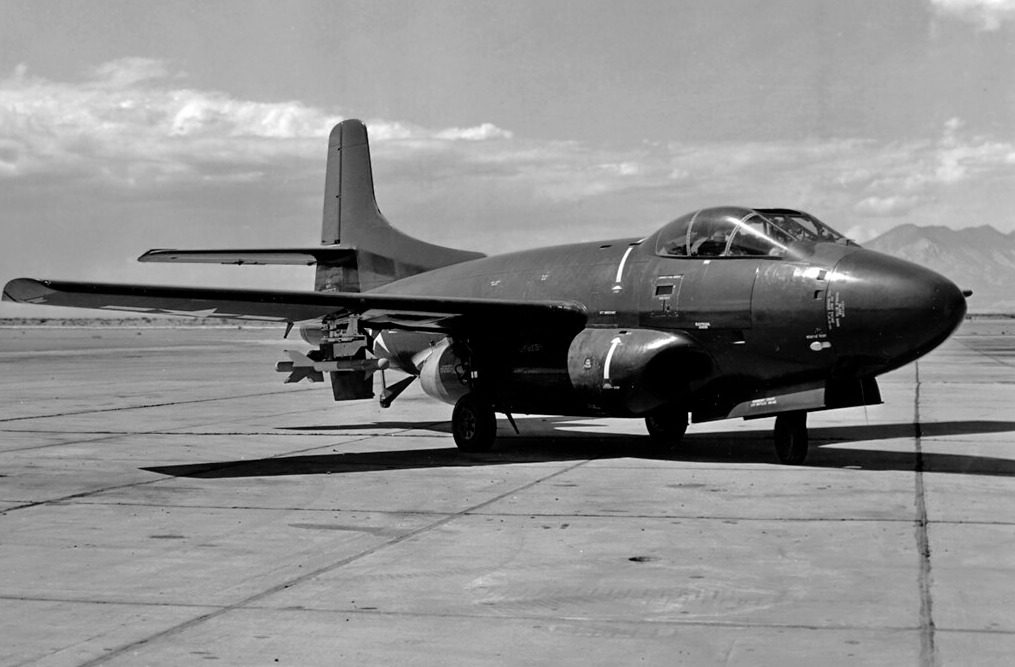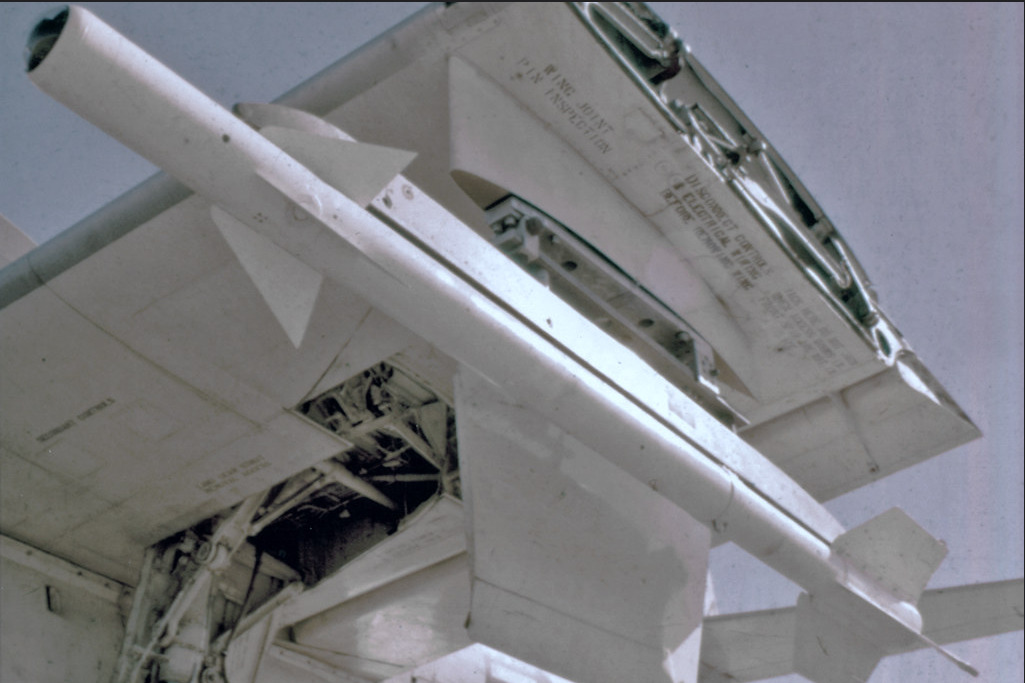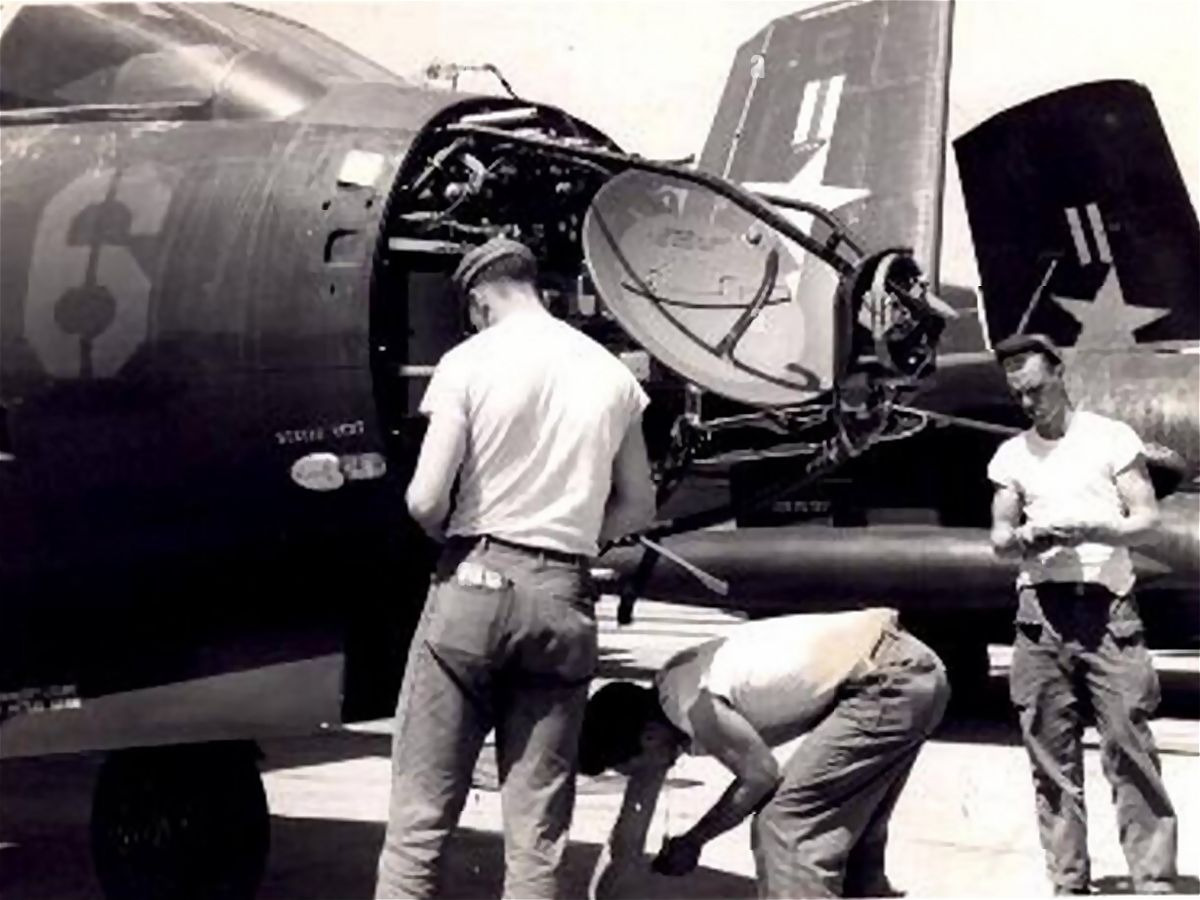Hello there. Today i would like to present to you Douglas F3D-1 Skyknight that was used as a test platform during early stage of AIM-9 Sidewinder development.
History
With introduction of new jet aircrafts during World War 2 US Navy found itself in difficult situation. Its new interceptor, the F7F Tigercat, was too slow to be able to effectively intercept fast-flying jet-powered threats. To counter these threats, a new interceptor was required. In August 1945 a requirment was announced for a new all weather interceptor. Due to requirments it had to be equiped with a radar and be powered by jet engines.
Four different companies bid for specification. These companies were: Douglas, Curtiss, Grumman and Fleetwing. Preliminary designs started and mock-ups of each proposal were built. In April 1946 US Navy selected Douglas design and ordered three prototypes.
The Douglas design was, let’s just say, very distinctive. A wide fuselage housing the Westinghouse AN/APQ-35 radar set and two Westinghouse J-34-WE-34 engines, coupled with straight mid-wings gained it a nickname “Willy the Whale”. Width imposed by radar set allowed pilot and radar operator to sit side-by-side.
On March 23rd 1948 first XF3D-1 took in to skies for the first flight. Plane was piloted by Russ Thaw. Second prototype first flew on 6th June 1948 and third prototype on October 7th 1948. All three of XF3D-1’s were fitted with Westinghouse J-34-WE-22, weaker version of the engine that can be found in serial planes. Prototypes were used in tests and passed them succesfully. On May 11th 1948 Douglas received an order to start a mass production of F3D-1 Skyknight.
Twenty eight F3D-1 Skyknights were produced. In 1949 specifications for F3D-2 version were released and on February 14th 1951 first F3D-2 took in the air. Total of 237 F3D-2’s were produced. Main difference between D-1 and D-2 versions were engines. D-2 used Westinghouse J-34-WE-36. D-2 also used improved AN/APQ-35 radar set.
F3D saw combat during Korean War and Vietnam War. All of Skyknights that saw combat were D-2 or D-2 based variants.
Skyknight part in development of air to air missiles
The Skyknight’s design allowed for easy modification. This feature was very helpful during development of many armament programs in which F3D served as a launch or test platform.
Skyknight and Meteor
The AAM-N-5 Meteor was one of several missile designs capable of delivering BVR missiles in the late 1940s and 1950s. Powered by first stage solid-fuel rocket booster and second stage liquid-fuel sustainer Meteor had reportedly operational range of 25 miles. Missile utilized semi-active radar homing guidance. F3D was used as a launch platform during test firings. The AAM-N-5 Meteor project was ultimately canceled in favor of the Sparrow missile system.
Photo of AAM-N-5 ground launcher, i couldn’t find any photos of Meteor mounted on aircraft:
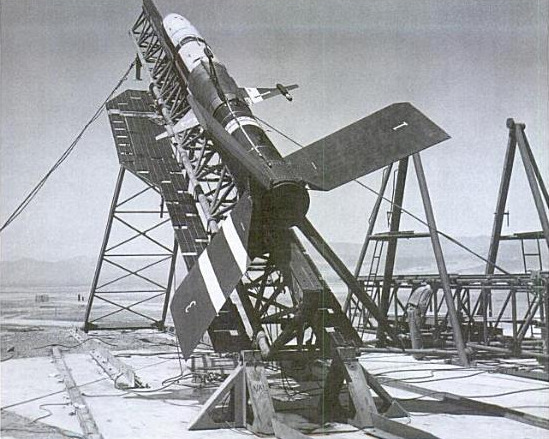
Skyknight and Oriole
The development of AAM-N-4 Oriole began in 1947. Missile developed by Glenn L. Martin comapny was supposed to be heavy air-to-air missile which would be carried by planes operating from aircraft carriers. Oriole failed to achieve planed range of 20 miles. Missile utilized active radar homing type of guidance which allowed fire and forget operations. In 1948 contract was redefined intro guidance development program. Already produced Oriole’s were used as a test vehicles in early 50s.
AAM-N-4 Oriole mounted on F3D:
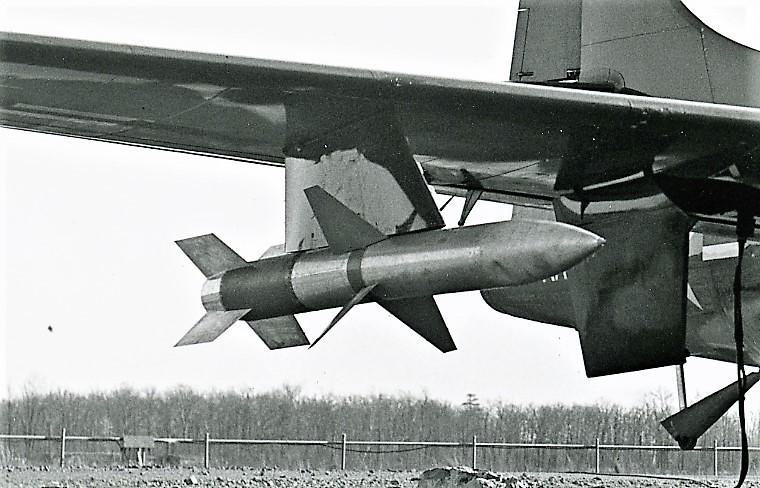
Skyknight and AAM-N-2 Sparrow
Sixteen F3D-2’s and twelve F3D-1’s (including one of XF3D-1 prototypes) were converted into D-2M and D-1M variants. Main differences from baseline variants were: removal of 20mm cannons, nose cone changed to a bigger one and four hardpoints for missiles. These changes to the nose were necessary to accommodate all systems required to test Sparrow missiles. Skyknight became first Navy jet equiped with air-to-air missiles that saw operational service. F3D played significant role in Sparrow development.
Modified XF3D-1 with Sparrow I :
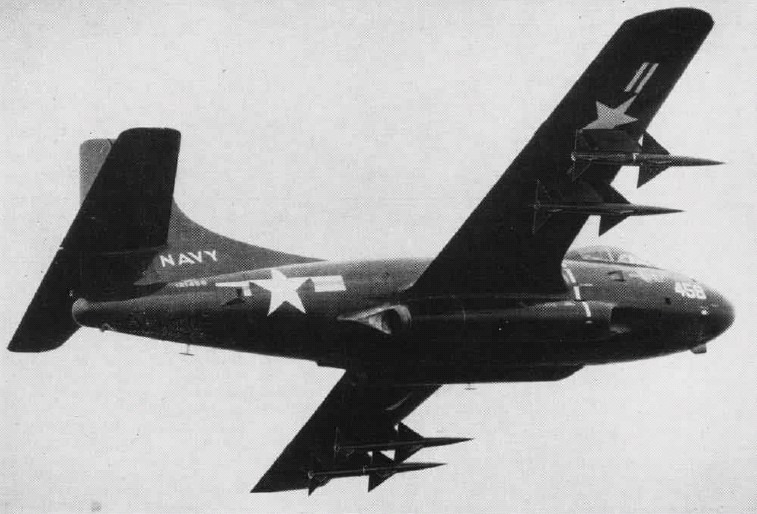
Skyknight and Sidewinder:
Sidewinder is a missile nobody asked for. Built from idea, not official requirment or specification missile faced many problems like funding, problematic nature of IR-seeker, biurocracy and lack of official support. William B. McLean with his team fought through these problems and in the early 50s Sidewinder materialized. Project at the time still lacked official support so Sidewinder team had to ask AD-4 pilots to help them with tests in the air. Skyraiders at the time wre conducting test with torpedos, after coming back from them they took in the air to help with missile development. In August 1952 Sidewinder project finally got its own plane for the tests. It was F3D-1 Skyknight. One of the test pilots said that it was “one tired plane”. Skyknight was used in most of Sidewinder tests in 1952 and 1953. In December 1954 F9F-8 and in 1955 F-100A Super Sabre leased from USAF were assigned to the project. Role of Skyknight during these tests was crucial. During them not only the missile was evaluated but also system around it. At begining voltmeter was used to know when the Sidewinder is ready to fire. Checking voltmeter - one of many gauges in the cockpit - would be really problematic in real combat. To solve this problem famous Sidewinder growl was created. F3D-1 carried various variants of Sidewinder during flight tests. It includes Sidewinder EX-0 airframe, Sidewinder 1 (AIM-9A), Sidewinder 1A (AIM-9B).
Sidewinder EX-0 under F3D-1 wing:
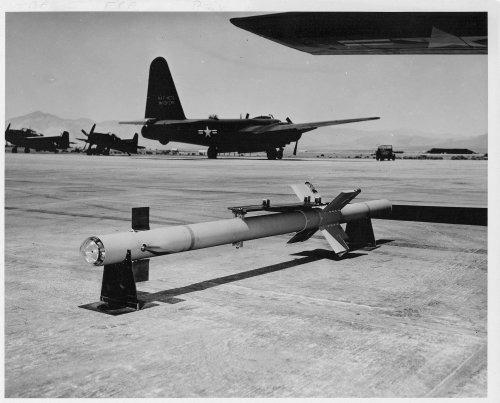
Specifications
Engines:
2xWestinghouse J-34-WE-34 each 3400lbf at milpower
Dimensions with wings unfolded:
Wing span - 50ft 0in
Length - 45ft 5in
Height - 16ft 1in
Dimensions with wings folded:
Wing span - 26ft 10in
Lenght - 45ft 5in
Height - 16ft 6in
Armament:
Main armament are 4xAN/M2 20mm cannons. They are mounted in the plane nose.
Plane can also be equiped with:
2xAN-M66 2000lb bombs
2xAN-M65 1000lb bombs
2xAN-M64 500lb bombs
2x11,75" “Tiny Tim” rockets
2xSidewinder air-to-air missile
2x300gal fuel drop tanks
AN/APQ-35 radar set
F3D-1 Skyknight was equiped with AN/APQ-35 radar set. This radar set is made of few smaller systems: AN/APS-21 long range search and intercept radar, AN/APG-26 gun aim radar and AN/APS-28 tail warning radar. APS-28 tail warning radar was praised by pilots for its usefulness over Korea.
Some data about these radars:
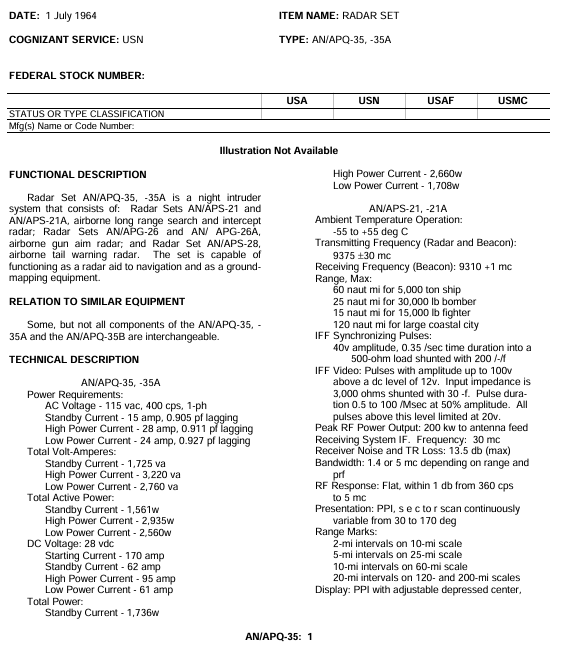
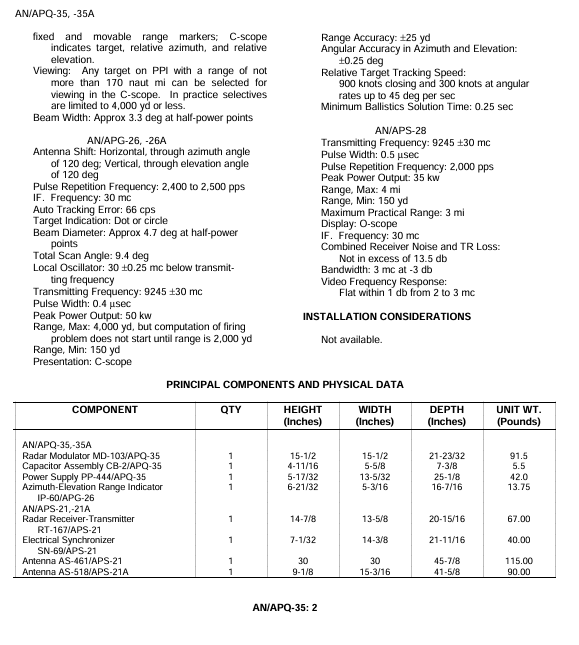
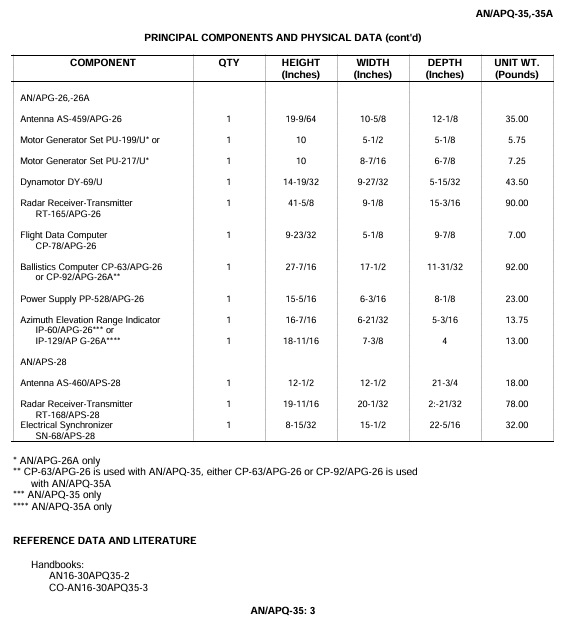
Sources of photos
Robert Sullivan | Flickr
G. Verver | Flickr
SDASM Archives | Flickr
Sources
TM 11-487C-1 MILITARY STANDARDIZATION HANDBOOK Informations about APQ-35 set are on page 814 (Hyperlink leads to an article, Handbook is attached as a source and can be downloaded there)
NAVAIR 00-110AF-10-1 Douglas F3D-1 “Skyknight” Standard Aircraft Characteristics
Naval Fighters Number 004 - Douglas F3D Skyknight (1982) by Steve Ginter
Osprey Combat Aircraft 143 - F3D/EF-10 Skyknight Units of the Korean and Vietnam Wars (2021) by Joe Copalman
Sidewinder: Creative Missile Development at China Lake by Ron Westrum, Naval Institute Press, Annapolis, Maryland (1999)
Magnificent Mavericks: Transition of the Naval Ordnance Test Station From Rocket Station to Research, Development, Test, and Evaluation Center, 1948-58 (2008)
- Yes
- No
- Tech Tree
- Event
- Premium
- Squadron
- I selected No earlier
- Sidewinder 1 (AIM-9A)
- Sidewinder 1A (AIM-9B)
- Sidewinder EX-0 (prototype airframe)
- All
- I selected No earlier
